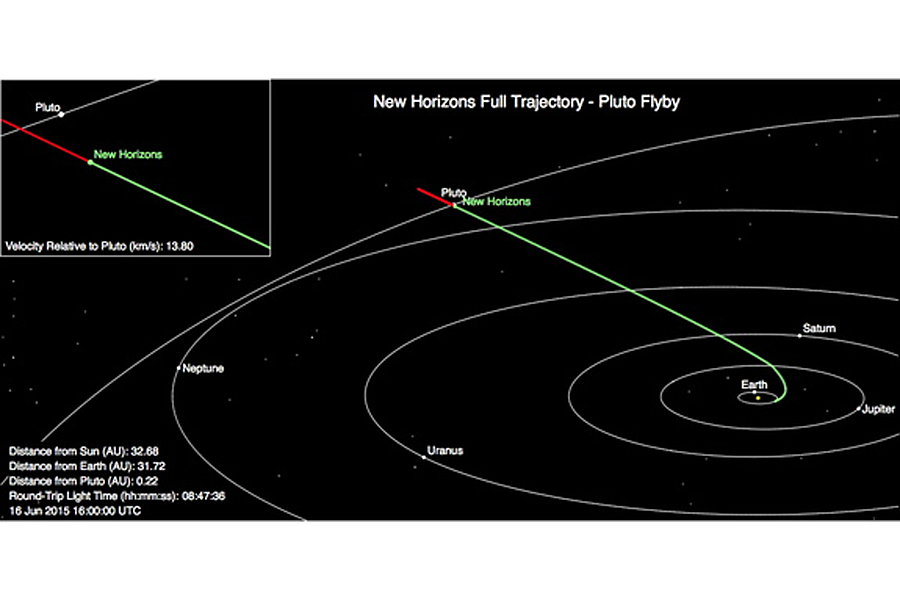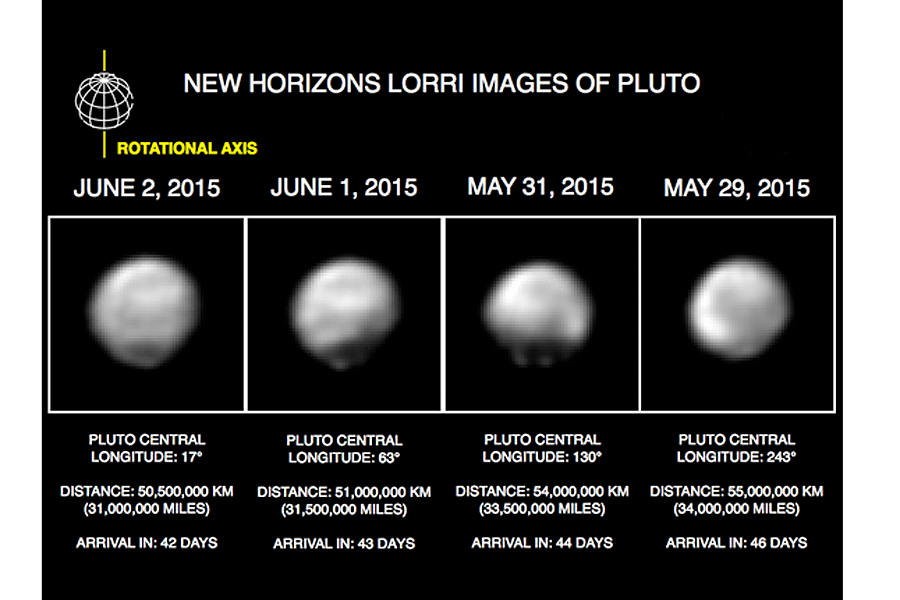NASA spacecraft less than a month away from Pluto
NASA's New Horizons spacecraft is less than one month away from its flyby of Pluto and in great shape for what promises to be a truly epic encounter with the dwarf planet.
New Horizons, the first spacecraft ever sent to investigate Pluto, has been traveling for nine long years and has just 20 million miles (32 million kilometers) to go before it makes a historic flyby of the dwarf planet. During its close encounter with Pluto, New Horizons will fly within 7,750 miles (12,500 km) of the dwarf planet and capture the first-ever close-up views of the icy world. [See the latest photos of Pluto from New Horizons]
"This is getting really exciting," Cathy Olkin, New Horizons' deputy project scientist, said in a video update today (June 16).
New Horizons has been tracking Pluto with its instruments and snapping ever-sharper views of the dwarf planet. Last week, NASA unveiled images of the four "faces of Pluto" — views of the different surface features on the dwarf planet as it rotated over the course of four days.
"We've always known Pluto had dark areas, but now, we're starting to see how large they are, where they're exactly located, what shape they take — and it's very fascinating to see this level of detail," Olkin said.
This week, New Horizons will begin taking infrared photographs of Pluto and its largest moon, Charon, to help map their surface geology and temperature. The probe will also begin taking daily color images that record Pluto's full rotational phase. It will also continue taking measurements with its Long Range Reconnaissance Imager, nicknamed LORRI.
New Horizons' Pluto flyby will also mark the first time a spacecraft has explored the icy Kuiper Belt, where Pluto resides, and the probe's mission won't stop once it zips by Pluto.
Chris Hersman, a New Horizons mission systems engineer, said that if the probe's power supply remains healthy, its mission could continue through the outer edge of the solar system for quite some time.
"There are a lot of interesting interactions between the heliosphere and what's beyond that, so we'd like to get there — and it looks like we can make it until the mid-2030s at least," Hersman said. (The heliosphere is the magnetic bubble containing our solar system, solar wind and the entire solar magnetic field.)
NASA's New Horizons mission update today was the first in a series of weekly updates — held each Tuesday this month — leading up to the Pluto flyby on July 14. Starting July 7, NASA and the New Horizons team will begin providing daily updates on the mission's progress.
To see NASA's complete schedule of New Horizons updates leading up to the Pluto flyby, visit:
http://www.nasa.gov/press-release/nasa-announces-television-coverage-media-activities-for-pluto-flyby.
Email Sarah Lewin at slewin@space.com or follow her @SarahExplains. Follow us @Spacedotcom,Facebook and Google+. Original article on Space.com.
- Pluto Quiz: How Well Do You Know the Dwarf Planet?
- Pluto And Charon Orbital Dance - New Horizons Gets Closer | Video
- How NASA's New Horizons Mission to Pluto Works (Infographic)
Copyright 2015 SPACE.com, a Purch company. All rights reserved. This material may not be published, broadcast, rewritten or redistributed.







